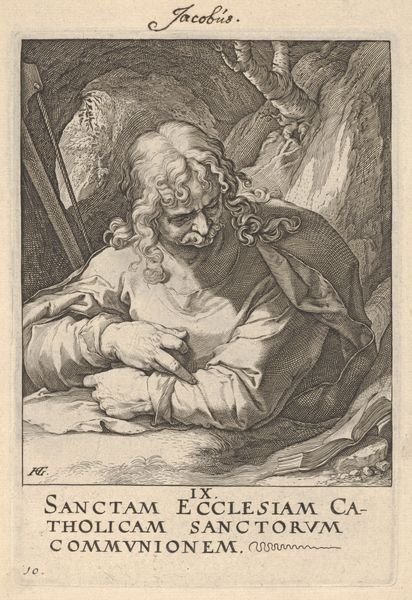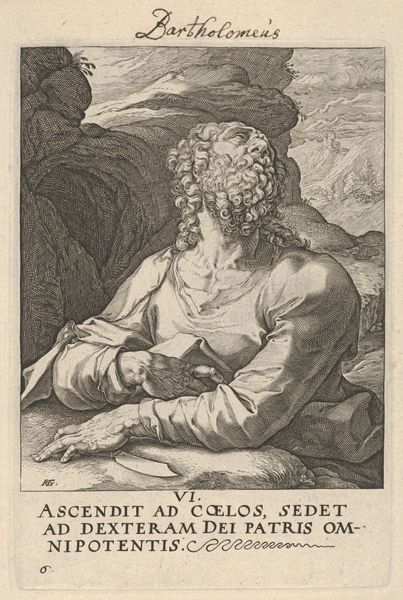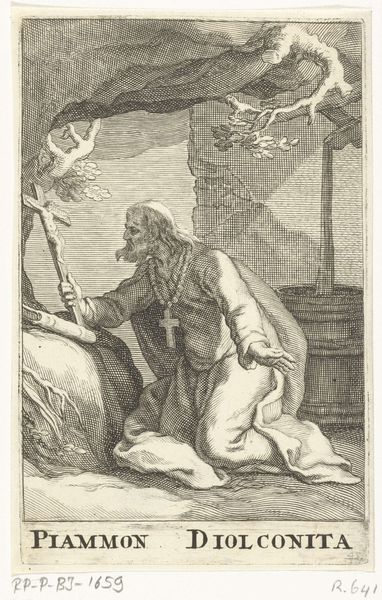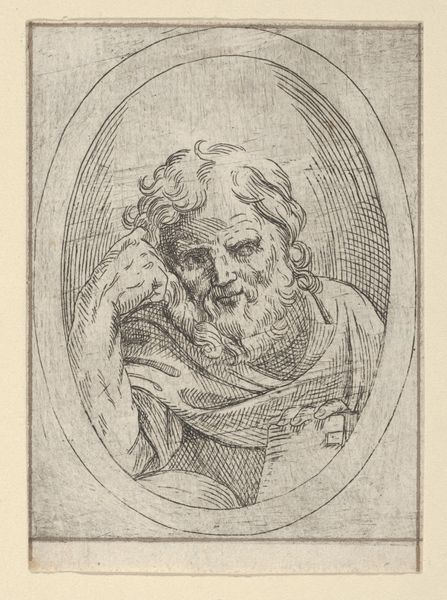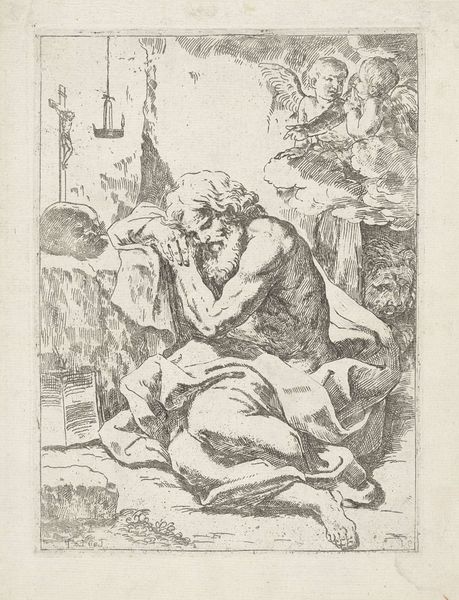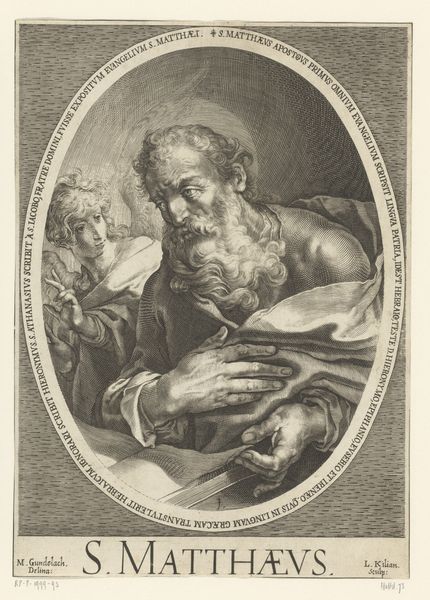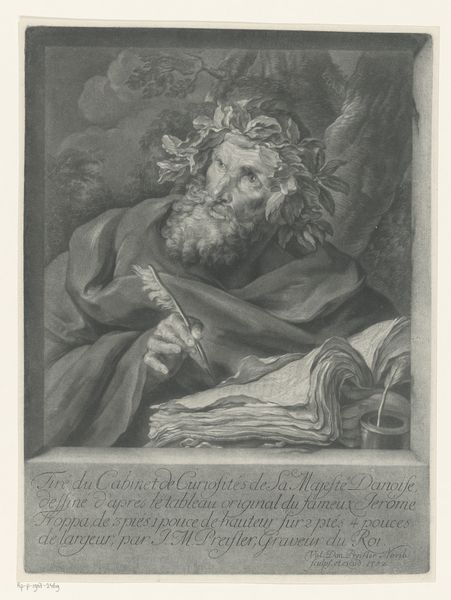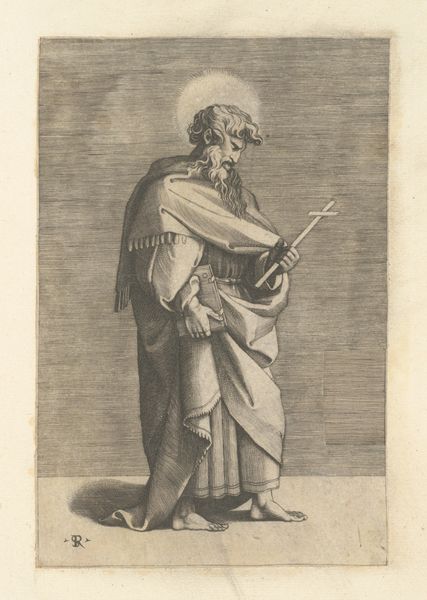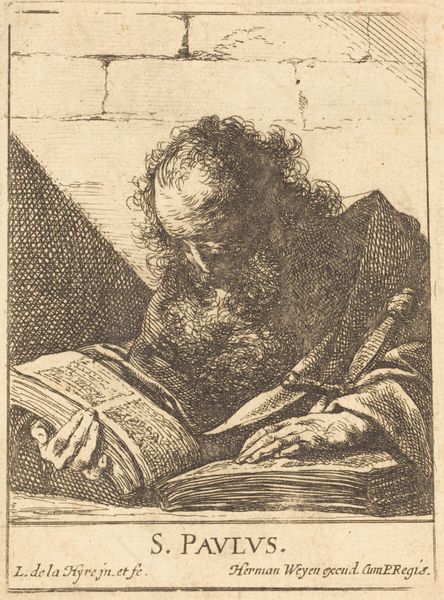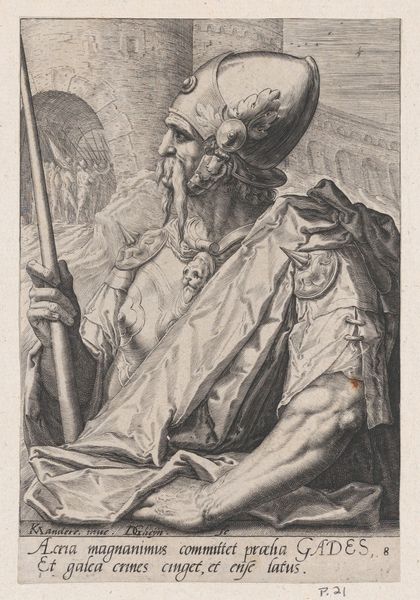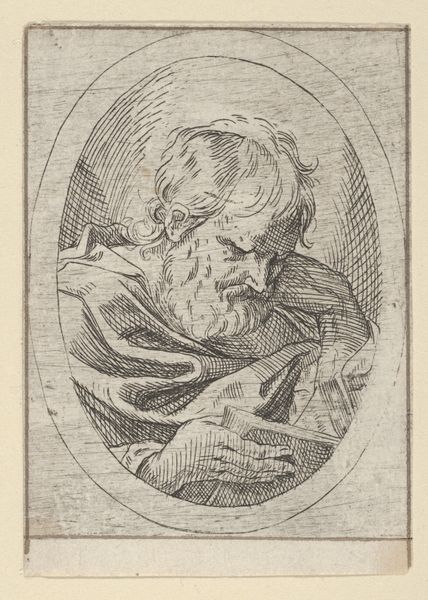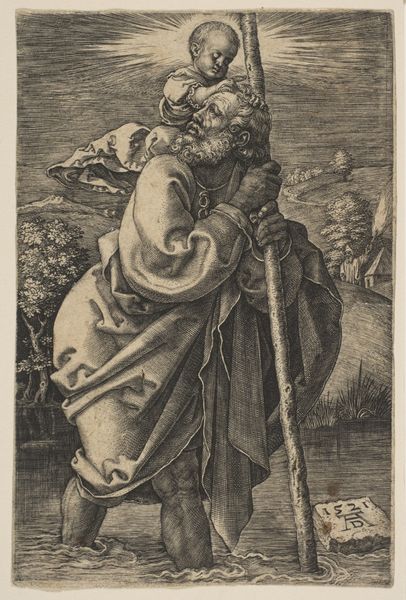
print, intaglio, engraving
#
portrait
# print
#
intaglio
#
figuration
#
11_renaissance
#
history-painting
#
northern-renaissance
#
engraving
Dimensions: 15.1 x 10.4 cm
Copyright: Public domain
Curator: Immediately, I see such somber thoughtfulness in the figure; it almost pulls you into his introspection. Editor: Indeed. Hendrick Goltzius created this engraving, titled "St. James the Great," in 1589, using intaglio on paper. It presents a complex blend of religious imagery and humanist portraiture typical of the Northern Renaissance. Curator: The layering of symbols is masterful. His scallop shell hat and the staff signify pilgrimage, a physical and spiritual journey. Even the placement of his fingers on his brow evokes mental strain and reflection, speaking to inner journeys. What’s compelling is how accessible such visual shorthands were—a real collective memory bank! Editor: Absolutely. Remember, during this era, visual communication served an essential social function, particularly during religious shifts like the Reformation. This image might have functioned didactically—affirming or reinterpreting the saint's importance during turbulent times. The inscription below directly ties to Marian theology, possibly meant to reassure Catholic viewers or subtly argue a theological point. Curator: It's as if we're viewing a character study merged with an iconic symbol. The deep lines and shadows crafted through the engraving capture a sense of gravitas, reminding me of how much visual codes permeate the psychological space—even across centuries. Editor: And notice the calculated setting—not an ethereal plane, but a craggy landscape—situating the saint firmly within an understandable earthly domain, all the better for engagement. It humanizes him and invites personal connections that were, undoubtedly, carefully calculated within the culture that both produced and viewed the work. Curator: It's fascinating to realize how deeply our visual culture—even today—echoes the encoding present in works such as this. This piece reveals that persistent dialogue between individual emotion and symbolic structure, isn't it? Editor: It certainly illuminates the power of imagery to bridge theological discourse with accessible representation during an age of rapid social change. Food for thought, indeed.
Comments
No comments
Be the first to comment and join the conversation on the ultimate creative platform.
